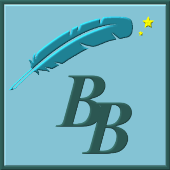This is the 10th of an 18 part series on How to be a DM. To start at the beginning, click here.
There are many ways to add a visual element to your campaign. Back in my first games of AD&D in the 80’s, we would use fancy-dancy maps drawn on graph paper.

The DM would say “You go down a 30ft corridor and see a door to your right. The walls are dripping with a strange liquid with a yellow glow…”
The designated cartographer in the group would sketch out the layout and make sure everyone knew what the setting looked like. It worked fine but we got spoiled over time.



It could take a while to draw the scene and what if you had some combat on your way out and you had already erased your map? You had to redraw it again. And you had to erase them within a day or the mat could get permanently stained, so you couldn’t save it for next session. Nevertheless, the mat approach remains a good option for many RPG players.
An alternate to the mat approach is to get copies of the maps from adventure modules or online and print them out at a copy shop. This works well if the module or book has a usable map with an appropriately scaled grid. Again, you add tokens, minis, or other props like plastic barrels and chests and you are good to go.
Back in mid-2000s, WoTC started selling dungeon tiles. These were double-sided, quality printed cardboard tiles to 1″ scale sold in different theme packs. Cardboard tile sets were a great innovation because of their portability and convenience, but there was sometimes questions about where walls were compared to doorways. Some people would slap a piece of plexiglass over the top of the tiles as they tend to slide around on the table.

At the other end of the market were high-end 3D dungeon sets with incredible realism. Dwarven Forge is probably the most well-known of these manufacturers. Some companies sold molds that could be used to make your own 3D tiles. I’ve even seen people create their own tiles, building them with individual bricks!
And of course today, there are people developing models and using 3D printers to print out tiles. Add a little paint and they look gorgeous.
But there are some real disadvantages to this approach besides just the cost and time.
Never forget that “Function trumps form” in situations like this. Everyone sitting around the table has to see what is happening. They need an unobstructed line-of-sight to their mini. The walls are just too high. These 3D sets are works of art, but there are usability issues.(Oops, my engineer side is showing.)
So let’s make a list of some of our requirements:
- Nice looking interior and exterior terrain
- Clear indications of the location of walls and doors
- Be able to use miniatures and other props on it
- Quick to set up
- Reusable
- No sliding around on the table
- Inexpensive

Join me in the next story and I’ll describe my approach for showing exterior scenes in What’s behind that tree?

Bitzy the Bard
“Life is an adventure story and you are the star. Choose to play a hero!”


